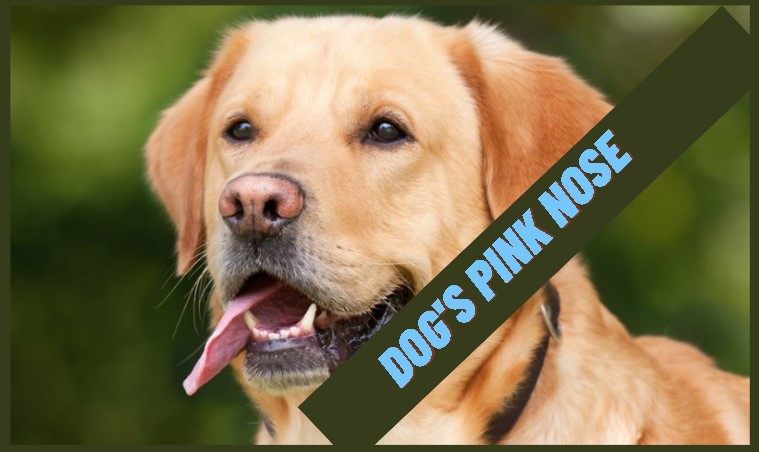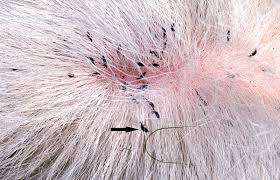Why Do Dogs Noses Turn Pink? The Truth

There are moments when you might look at your dog, and then suddenly their nose turns from black to pink. Sometimes this can coincide with other symptoms, but other times it may just be a momentary change. Here’s why that happens:
The pink part of a dog's nose is called the rhinarium
The pink part of a dog's nose is called the rhinarium. It's made up of blood vessels, and it is a very sensitive part of a dog's body. The pink part helps them smell; however, they can also smell with their entire nasal cavity. This area is very important for your dog to be able to smell things because they use their sense of smell in order to detect food or other objects that may be harmful or poisonous to them.
Pemphigus can be the cause
A number of factors can lead to fluid accumulation in the nasal cavity, causing a dog's nose to turn pink. If you notice that your dog's nose is turning pink, visit your veterinarian for a diagnosis and treatment plan.
The most common cause is pemphigus (puhm-fig-us), an immune system disorder that causes blisters on the skin and mucous membranes. It can also be fatal if left untreated—but fortunately, it can be effectively treated with steroids.
A dog's nose can change colors in response to temperature, humidity, cold weather and sunburn
A dog's nose can turn pink in response to cold weather, sunburn and hot weather. The blood vessels in a dog's nose are close to the surface of the skin. This makes them visible through the thin layer of hair on the tip of your pet's nose. When this happens, you may notice that your dog’s nose has turned a rosy shade of pink!
Dogs have an incredible sense of smell that helps them detect scents from far away distances - up to about five miles away! Their noses are also very sensitive: Some dogs have been known capable detecting cancer or explosives from as far away as half a mile! Rubbing their noses against objects like trees or grass helps spread these scents around so they can better pick them up later when they sniff at those same spots again later on down their journey through life’s path (or whatever else they might happen upon along said path).
If a dog's pink nose turns dark brown, they could have vitiligo
If a dog's pink nose turns dark brown, they could have vitiligo. Vitiligo is a skin disease that causes white patches to appear on the skin. The patches are usually symmetrical and can appear anywhere on the body, but they are most common on the face and ears. The patches are caused by a lack of melanin (a pigment in the skin that gives your dog their color). It’s important to know if your dog has vitiligo because it can be associated with other diseases. You should also see your vet if you notice any changes in their nose color!
If your dog's nose is dry and cracking you can use a small amount of Vaseline to help protect it
- Use a cotton ball to apply the Vaseline.
- Apply the Vaseline once a day, after bathing or going outside in the winter months when it’s cold and dry out there (I always take my dogs for walks when people are just getting home from work). This will keep their noses soft and moistened as well as prevent any chapping from occurring due to exposure from weather conditions such as wind or snowstorms that may occur during certain seasons throughout the year (like winter).
- You should also apply at night before bedtime because this will give your dog enough time before they go out again later on during the day if they need anything else done on top of keeping their nose clean with washing hands first before applying it right away so that way we don't get too much oiliness happening at once which might cause problems down below if not properly cleaned off immediately after application so make sure not too much comes off into washing hands first before doing anything else!
Dog's noses are very interesting things!
Did you know that dogs have a special organ in their noses called the vomeronasal organ? This organ is used to identify pheromones. Pheromones are chemicals secreted by animals that trigger behavioral responses from other members of the same species. For example, when a dog smells another dog's pheromones, they may become aroused or defensive (like when they smell fear).
The vomeronasal organ is also used to detect the smell of cancer! The olfactory bulb contains neurons that are sensitive to very small amounts of odors, but these neurons don't respond well enough to detect cancer-related odors alone. But when combined with the information provided by our sense of taste and touch receptors on our lips and tongues (which can sense bitterness), we can detect early signs of cancer through chemical changes in our saliva.
Conclusion
These are just a few of the reasons for why your dog’s nose might be turning pink. If you notice any other symptoms, it may be time to call the vet. Otherwise, don’t worry too much about the color of your best friend’s nose!




